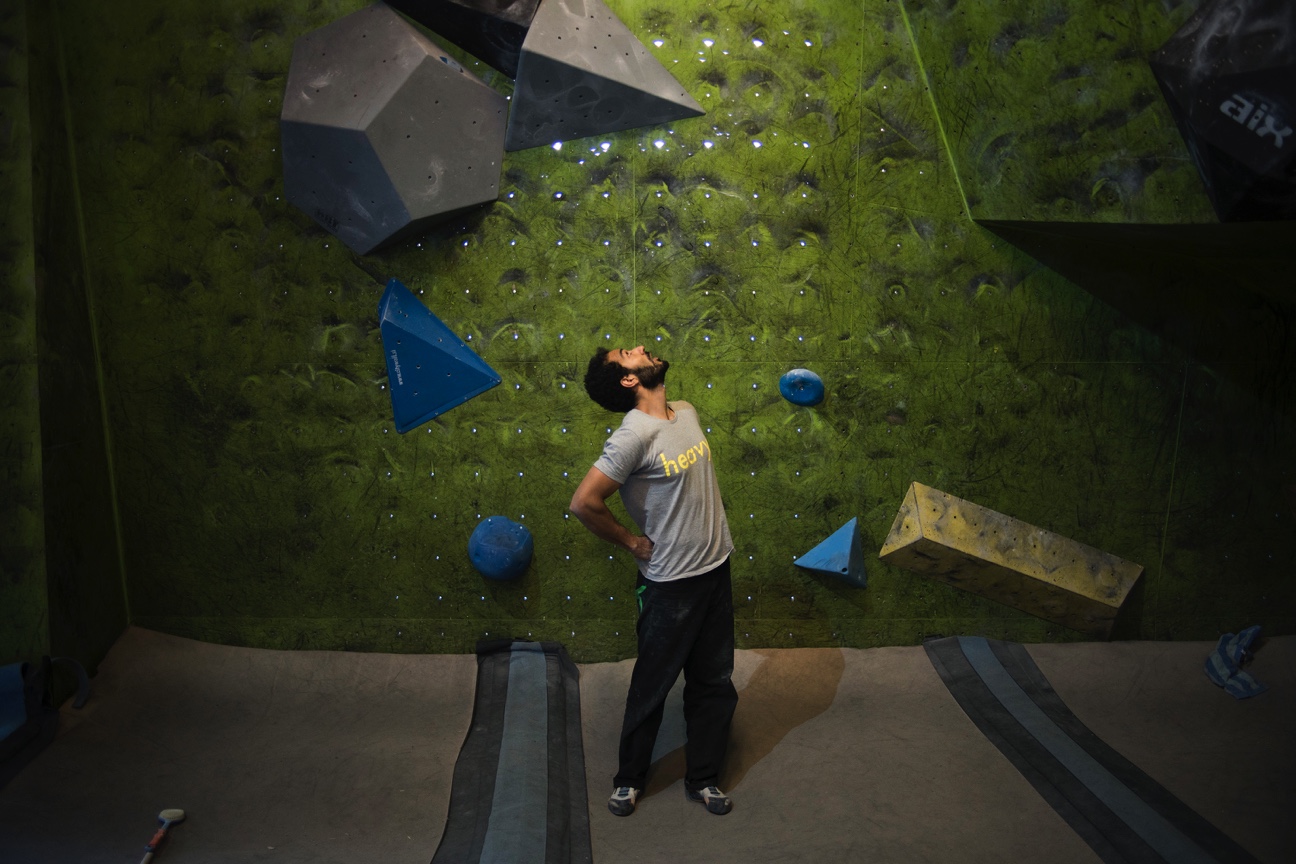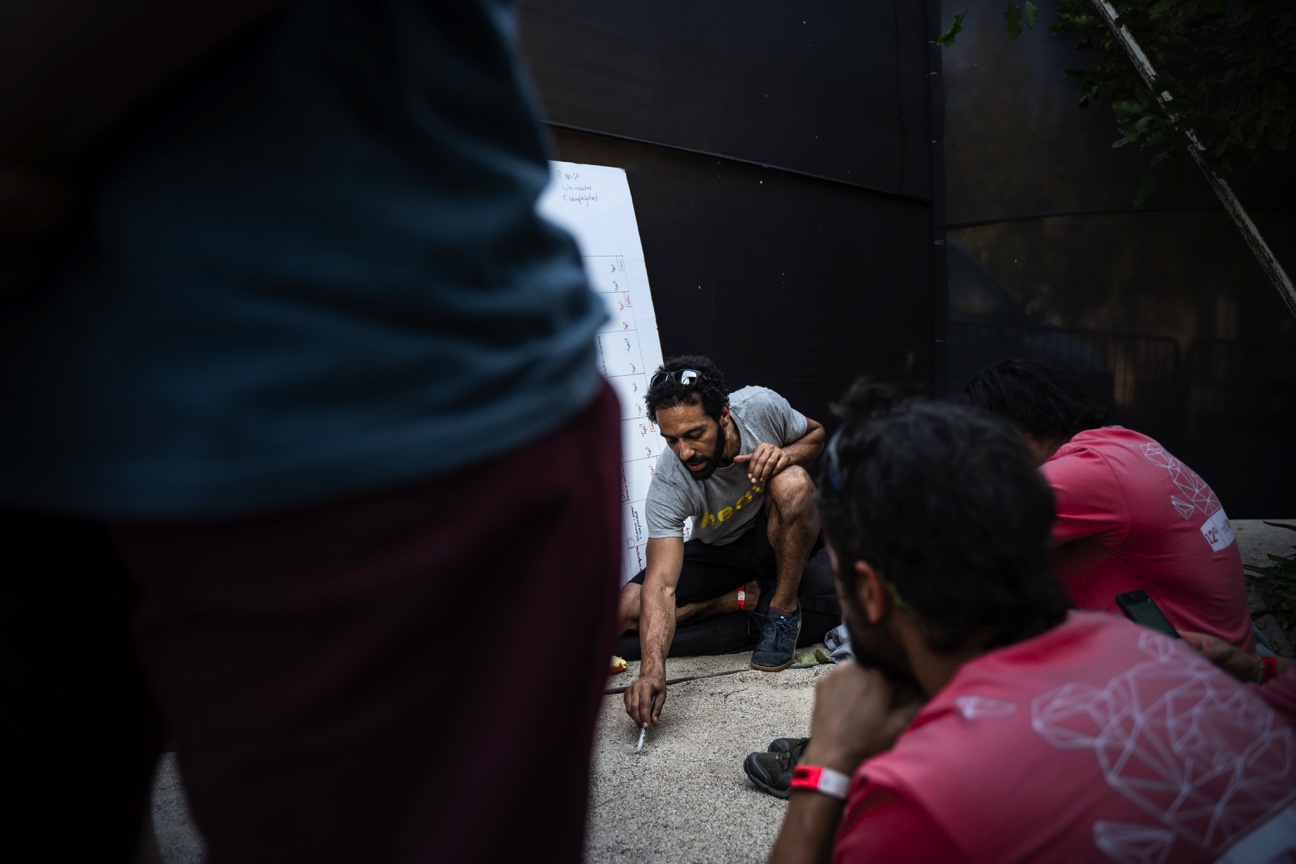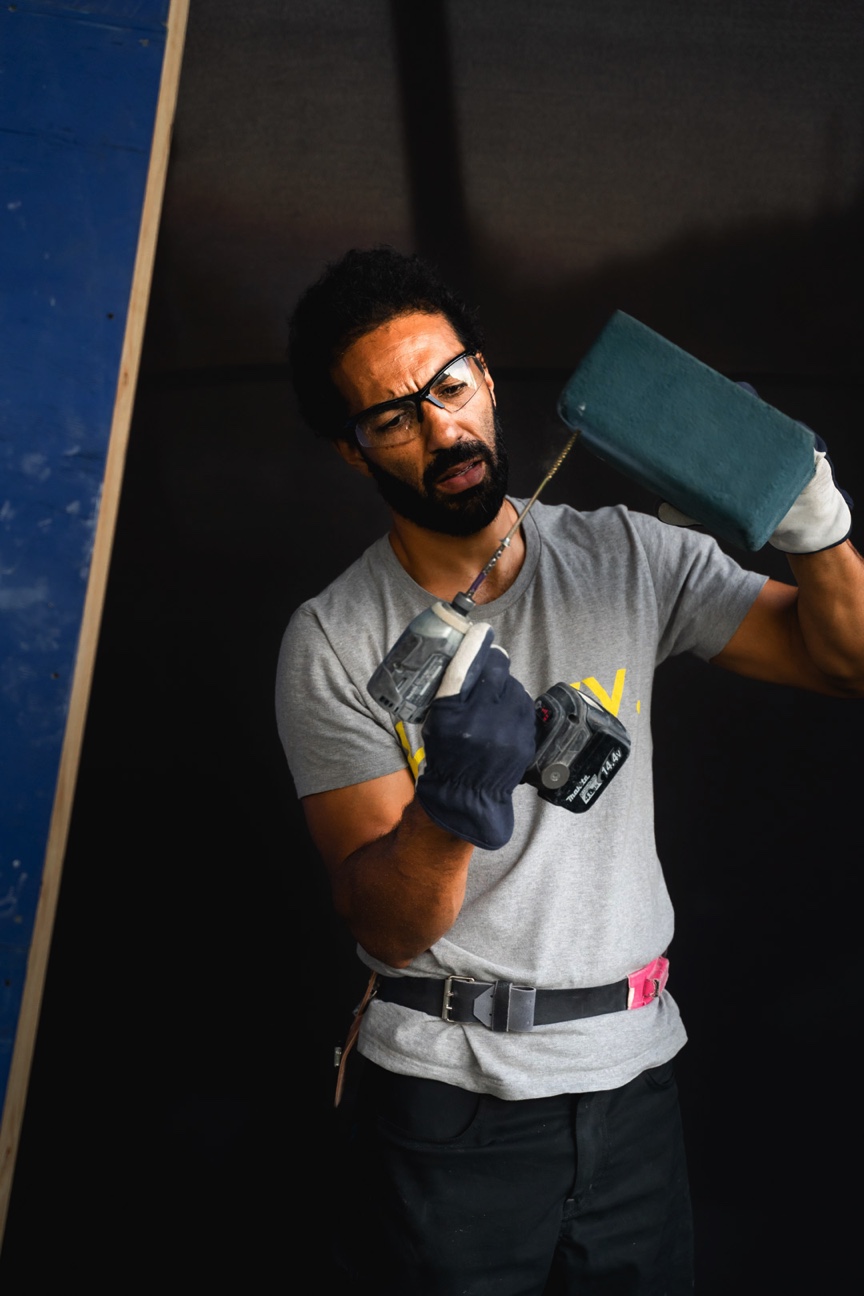Tonde Katiyo
PROFESSIONAL ROUTE SETTER
How did you start climbing?
I grew up in Zimbabwe, and one of my teachers at my school was a climber. One day he was talking about climbing and I was asking some questions and he asked if I wanted to try. I was about 12. A funny fact is that my first day climbing was a very hot day and as I got to the top of my first route I got very dizzy, maybe from the dehydration and fear and had to be lowered. That teacher, Christophe Ducouret became one of my best friends, and later I was best man at his wedding.
How did you start routesetting, and when?
I started route setting in 1996. I went to the gym and there was a route setting course happening and I knew the instructor from a previous job, a famous French climber from the 80s Fabrice Guillot. He told me: “Sit down, you are going to be interested.” He was right.
Where have you set around the world?
So many places: Many in France, Canada and the US because I lived in those countries. I traveled several times to Sweden, Finland, Denmark, Germany, England, Singapore and Spain. And I have also been lucky to set, coach or teach setting in Italy, China, Japan, Australia, Chile, Mexico, Portugal, Belgium. Maybe I am forgetting a few…
What inspires you when you set?
For a long time now it has been about emotion. Of course I have passion about movement, and puzzles, playing and all the things that make climbing interesting but for me they are only building blocks to make people feel things. To me it is the most powerful gift to others: to feel things.
What do you define as quality in setting?
Because I value the experience of feeling, I think the presence of an emotion is a key aspect of quality for sure. There are many boulders that offer nothing, they are boring. I also look at the craft of the setter, what choices did he or she make and if they had a goal, how close is their boulder to this goal. Aesthetics play a big role in quality also, but only if the goal is achieved. Sadly aesthetics are now days confused for quality, if a boulder looks nice, it doesn’t mean that it climbs well.
How do you set for newbies and pros alike?
For me it is not so difficult, what is important is to understand who you are setting for and what experience you are trying to set up for them. What type of challenge is it? How difficult should it be for them? What are the positive and negative part of this experience, and in what proportion? In climbing there are lots of micro experiences that are important part of growth and progression, like frustration when you have to try a boulder many times to succeed, or simply failure. This is easy in a climbing competition because your climbers are separated into categories in which peoples motivation and levels are similar. What is incredibly difficult is to set boulders that both newbies and pros can enjoy at the same time, for example when you set easy or mid-range boulders in a commercial climbing gym today, they get climbed by stronger climbers as warm-ups and be the projects of beginners. If the boulders can be good enough to give an engaging and enjoyable experience to both groups, it can create a really great atmosphere and nice interaction between people.
What do you consider the most important thing(s) when setting?
In my teaching I have identified three things that contribute to good setting: safety, communication and teamwork. If I have to choose one maybe teamwork is the number one. I think it is what I enjoy the most about setting, working with others, being creative and playful collectively. I feel like that when the right balance of fun and work are in balance in team, the quality of the climbing gets very high. It requires some trust and some personality from everyone, but it makes every setting job a unique adventure (that is not always easy).
What’s the future for route-setting (in your opinion)?
To be honest I am a little worried for route setting these days. It is trying to find its place in the world of indoor climbing that is growing fast in many ways. Climbing gyms are getting more numerous and much bigger than in the past and of course climbing being part of the Olympics is adding a lot of pressure on our profession. Setting plays a key role in this industry and I feel if we don’t take care of it, things could easily go in a bad direction. I am worried but not pessimistic, there are many talented setters still around, and many new young setter with so much talent imagination. There are more and more setting classes and workshops. I think setting is about sharing climbing, if we want to share good climbing in gyms and competitions we need to cultivate route setting to do that with safety regulations, education and making sure innovation and creativity stay part of the process.
What is it that attracted you to Heavy?
When I discovered Heavy for the fist time what I liked is that is was a real climbing brand but inspired from streetwear more than technical alpine clothing. I love nature and being outside but I grew up in Paris and a young person my culture was dominated by the city. It was my home, my playground listening to hip hop while riding my bike or catching the train to the gym. How I dressed was also influenced by my friends and the city. For me Heavy was perfect because I could go to the gym and have a session, then dust off the chalk put on my favourite sneakers and go to party or bar and not feel like I have to change my identity. I love many climbing brands but with Heavy I feel like all of me is represented, not only the climber side.
Tell me if you have a impressive story with Heavy?
I don’t know if it is impressive, but when I discovered Heavy on my first visit to Japan in 2011, I fell immediately in love with the glow denim. I had worn Levi’s before that had the turning stitching so when I discovered the climber version of it with stretch denim my brain exploded. I would have happily continued to buy Heavy as foundation to my wardrobe forever, so you can imagine just how excited I was when Yuzawa-san asked me to be part of the team. I was proud to be supported as a setter by a climbing brand that inspired me.
More Stories


